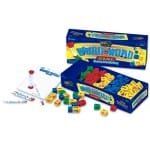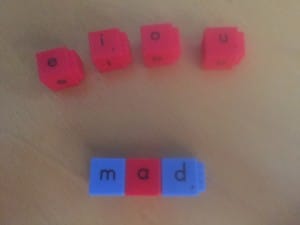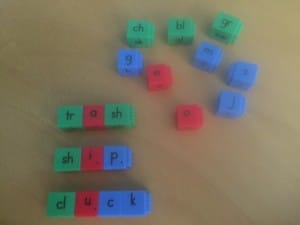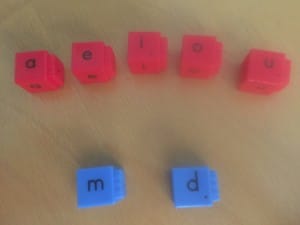Presto Chango for Short Vowel Sounds- Multisensory Monday
Posted by Brainspring on 19th Jul 2015
Welcome to Multisensory Monday! Thanks to those of you who have been voting in the Click on Detroit contest- keep voting!
I was surprised when one of my more advanced students suddenly started having trouble with short vowel sounds during dictation again. We had worked on vowels a lot when I first started working with him and he seemed to have them mastered. Since it’s summer vacation however, vowel sounds aren’t being practiced as consistently as during the school year when he was reading and writing every day.
Has anyone else had a situation like this?
My challenge has been to come up with quick activities I can add to our lessons to reinforce short vowel sounds. He is going to be a 5th grader in the fall, so I have the added challenge of creating activities that are more sophisticated than the basic vowel intensives we started out with. I created today’s multisensory activity for my student and I know it’s a winner because he has asked to play it again!
Presto Chango
 For this activity I used cubes from my Word for Word game. I use the pieces to make all sorts of word building games. I’m not even sure if I have ever played the game according to the directions it came with! It’s definitely a resource worth checking out.
For this activity I used cubes from my Word for Word game. I use the pieces to make all sorts of word building games. I’m not even sure if I have ever played the game according to the directions it came with! It’s definitely a resource worth checking out.
What resources/games are on your “must have” list?
If you don’t have Word for Word cubes, you can use letter tiles or even write letters on a whiteboard or use pencil and paper. Begin by giving the student the 5 vowels to choose from. You may want to also have the vowels with their keyword pictures visible, hanging on the wall or placed on top of the desk. Having the vowel pictures visible is a great way to help struggling students.
 Next give the student beginning and ending letter(s). The student will fill in the middle vowel sound to create the words you say. For example, I might say “map” and the student would add in the a. Then I might say “mop” and the student would change the a to an o. The words can be pounded and tapped, like during dictation, if the student needs more support.
Next give the student beginning and ending letter(s). The student will fill in the middle vowel sound to create the words you say. For example, I might say “map” and the student would add in the a. Then I might say “mop” and the student would change the a to an o. The words can be pounded and tapped, like during dictation, if the student needs more support.
Alternately, the student can rotate all 5 vowels through the word. For each new vowel, they read the word and then decide if it is a real word or not.
 My student and I started out with only CVC words at first. After a few warm up rounds, I added in digraphs and blends because he is more advanced. To end the activity, I challenged him to use each vowel to build a word we hadn’t made before. The words he came up with were impressive!
My student and I started out with only CVC words at first. After a few warm up rounds, I added in digraphs and blends because he is more advanced. To end the activity, I challenged him to use each vowel to build a word we hadn’t made before. The words he came up with were impressive!
Comment below with how your students enjoyed this activity.
Remember to like us on FB, follow us on Twitter and LinkedIn and share us with your friends!

